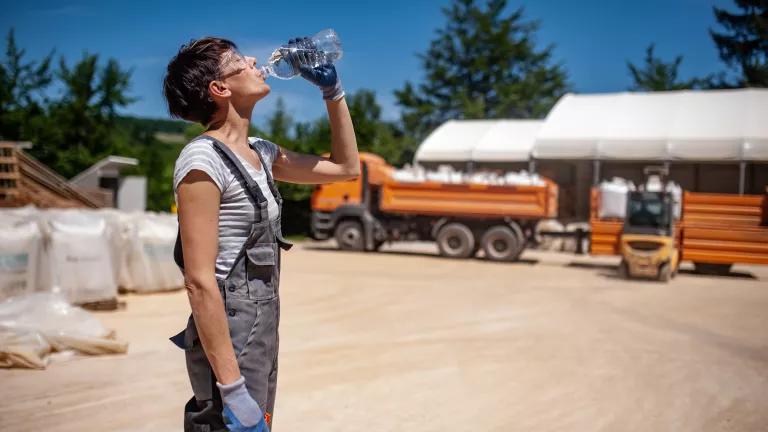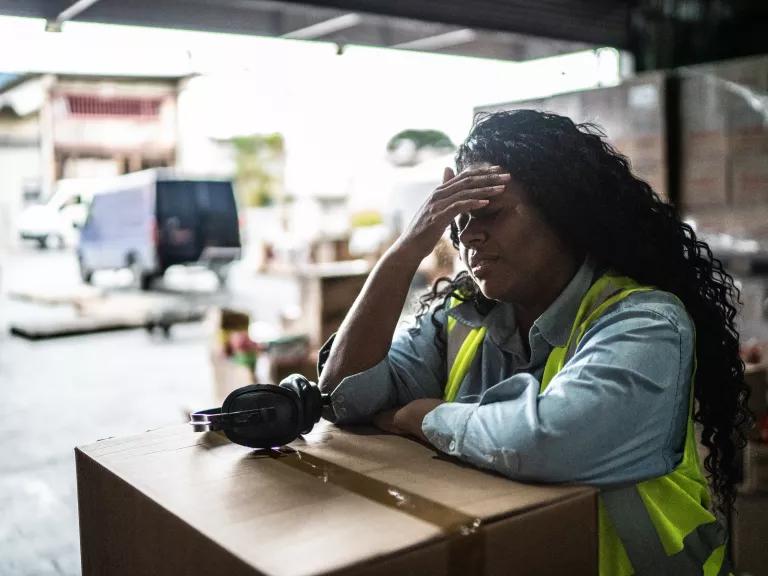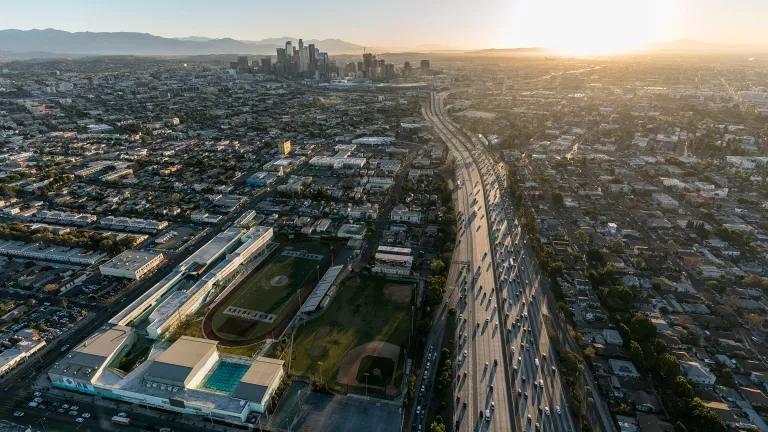Code Red for Heat: Workers & Communities Need Protections Now
Workers and communities urgently need protection from the ravages of killer heat.

Record-shattering heat across the United States this summer has created nightmare travel conditions, drained economic productivity, filled hospital burn units, and, tragically, killed people. The brutal conditions are a wake-up call to action for being prepared for these extreme temperatures. But let’s face it: The country has been hitting the snooze button on the climate adaptation clock for decades. Two new bills in Congress and announcements made yesterday by President Biden have the potential to inject much-needed energy into heat resilience efforts—while reminding us that a lot of urgent work still lies ahead.
First, a quick recap on why this is important. Heat is already the top weather-related killer in the United States, with or without climate change. But the risk of serious health harms—including lasting damage to our organs and mental health—is growing as pollution from fossil fuel use makes heat waves worse and drives nighttime temperatures to dangerous heights. In fact, a new analysis finds this July’s heat waves in Texas and the Southwest would have been “virtually impossible” without climate change.
Protecting Workers from Heat
President Biden yesterday directed the Occupational Safety and Health Administration (OSHA) to issue its first ever “Hazard Alert” for extreme heat and to ramp up inspections of high-heat industries. This is an important recognition of the toll heat is taking on workers. As the president said, it’s “outrageous” that workers don’t have water breaks in some places.
But in addition to these steps, which build on the heat emphasis program OSHA started last year, the administration needs to expedite rules to specifically protect workers from high heat. Despite the impression given by the Hazard Alert, the agency cannot sufficiently protect workers from heat with its existing regulatory tools. As OSHA's Larry McGowan told a federal committee late last year, doing so is "like a little rulemaking every time."
"If we had a rule we could just cite the certain provision [employers] weren't doing," Mr. McGowan said. "So a heat rule will really help in this regard."
The last few weeks have shown us that strong, enforceable heat standards can’t come a moment too soon. Workers have died from heat on the job in Arizona, Texas, and Florida. One worker who passed out from heat had to be rescued from a roof by firefighters. Others may spend weeks in the hospital recovering from heat stroke. With more than 130 million U.S. residents under heat alerts over just the next couple of days, additional preventable tragedies are all but guaranteed.
OSHA has been in the early stages of developing a permanent heat standard for the past two years, and workers could be waiting several more years if history is any guide. (For readers who love wonky details, the agency is currently partway through Stage 2 of a seven-stage process.)
Members of the House and Senate tried to hustle OSHA along this week by reintroducing the Asunción Valdivia Heat Illness and Fatality Prevention Act. The bill directs OSHA to develop an interim workplace heat standard within a year and to periodically revise the safeguards as “environmental conditions or new work practices” increase the risk of heat-related health harms. That kind of review will be essential as the world continues to heat up.

Strengthening Federal Coordination and Supporting Communities
A second heat resilience bill this week comes from Sen. Ed Markey, Rep. Suzanne Bonamici, and several other members of the House and Senate. The Preventing HEAT Illness and Deaths Act introduced yesterday would strengthen coordination across the federal government and unlock assistance for communities in three main ways.
First, the bill would strengthen an Obama-era initiative called the National Integrated Heat Health Information System (NIHHIS). This system has been working across federal agencies for over seven years to “build a nation free from heat-related illness and death.” However, the collaboration has never had a formal place in federal law or its own dedicated funding—both of which would be provided by this bill. The bill also directs NIHHIS to submit an all-of-government strategy to reduce preventable heat deaths and illnesses to Congress every five years.
Second, the bill would help fill key policy and research gaps with a wide-ranging extreme heat study. Scientists and policy experts know a lot about how to keep people safe from heat. But key questions remain, including how best to address compound hazards such as the recent collision of killer heat, unhealthy wildfire smoke, and the COVID-19 pandemic.
Third, the federal government would be authorized to provide financial assistance for heat-resilience projects to community groups, workforce development boards, and other eligible institutions. Crucially, priority would go to projects that address the long-standing inequities threatening Black, brown, and low-income communities on the front lines of the climate crisis. As President Biden reminded the nation yesterday in his remarks, the recent Infrastructure Investment and Jobs Act and Inflation Reduction Act also unleashed historic funding for community resilience projects through the Department of Energy, Department of Housing and Urban Development, and other federal agencies. However, this new legislation includes an important accountability mechanism by tying financial assistance back to the national heat strategy.
These announcements by President Biden and measures in Congress are an important step forward. There’s also much more to do: OSHA is taking far too long in putting together the first federal worker protections for heat. These standards should require that workers exposed to heat get paid breaks in cool spaces, access to water at no cost, and training on heat-related symptoms and emergency response, among other commonsense measures.
This summer has shown us that the heat is here to stay. The alarm bells of the climate crisis have been going off for far too long. It’s time to heed their call, drink a strong cup of iced coffee, and get to work on eliminating the pollution heating our climate and building a society that can survive and thrive in a hotter world.



